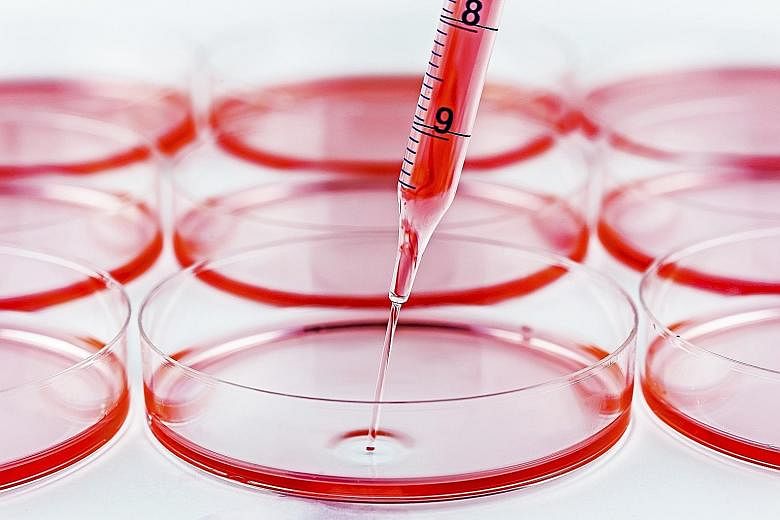To beat your enemy, you have to know your enemy. For cancer, this may mean growing cancerous tumours in the laboratory, forcing them to advance, and then finding ways to kill them.
And that is what is being done at the Genome Institute of Singapore (GIS), where models of lung, liver, breast and colon cancer tumours are carefully nurtured in Petri dishes as willing subjects for research.
Professor Ng Huck Hui, executive director of the institute, believes such an approach could help scientists and oncologists stay one step ahead in the fight against cancer.
Scientists at the GIS have been working to perfect the models by getting them as similar to those in humans as possible, for around 11/2 years. They are doing this in collaboration with scientists and clinicians from institutions such as the National Cancer Centre Singapore (NCCS) and the National University Health System.
Cancer patients often run into two roadblocks - drug resistance and cancer metastasis, which means that the disease has spread to other parts of the body.
By creating a model of a tumour in the laboratory, scientists can artificially induce it to become resistant to a particular drug, or to spread, and then study it to find out what compounds would work to kill it.
"The idea is to study the cancer outside of the patient's body and then plan a strategy," said Prof Ng.
"The model is like an avatar of the cancer patient."
He added that GIS' models are more sophisticated and consist of different cell types and cells with different profiles, as is the case with cancerous tumours.
Though it is still early days, he pointed out: "If we don't start to think of new approaches, we can't win the battle."
According to the National Research Foundation, over $200 million has been invested in cancer research over the last 10 years, with promising results. In July last year, a new cancer drug developed by Singapore researchers that targets cancers of the colon, stomach and pancreas, among others, entered clinical trials. The compound targets proteins called Wnt that cause excessive cell growth when they go rogue, leading to cancers. It is the first publicly funded cancer drug developed from scratch in Singapore to be tested on patients.
Efforts are also ongoing to develop a blood test that can extract tumour cells and DNA.
Compared with the traditional biopsy, this method - known as a liquid biopsy - is less painful, cheaper and has little risk of side effects like infections. This new method is being studied here by the NCCS and the Agency for Science, Technology and Research (A*Star), and could be offered to patients as early as this year. So far, the NCCS tests have shown the accuracy can be up to 90 per cent.
Over at A*Star's Institute of Bioengineering and Nanotechnology (IBN), researchers are developing nanocarriers that can target cancer cells and deliver drugs to them more efficiently. This will help to reduce the side effects and costs .
The team has developed a drug- delivery system using a green tea ingredient called epigallocatechin gallate. It has been shown to be more effective in delivering Herceptin, a breast cancer drug, in lab mice. And efforts to develop a similar nanocarrier for sunitinib, a drug used for kidney cancer - are well under way.
"We want to be able to introduce cancer drugs in a way that has much less side effects," said IBN executive director Jackie Ying. "Green tea also has a lot of benefits - it's anti-inflammatory as well as anti-cancer so this creates a synergistic effect with the drug we try to deliver."
But even with all the breakthroughs that have been made in treatments and diagnosis, Professor Ying said more can be done, for instance, by gaining a better overall understanding of what causes cancer. "I think the causes include things that are difficult to quantify like stress, and also environmental factors and the food we eat.
"Personalised medicine is certainly a tall order but, for now, we are looking at ways we can do genotyping. Based on a patient's genotype, we can know whether a certain drug may or may not work," explained Prof Ying. "This will allow us to prescribe drugs that the patient is most responsive to and with minimal side effects."
Find out more about cancer and how to fight it on ST's Fighting Cancer microsite.

